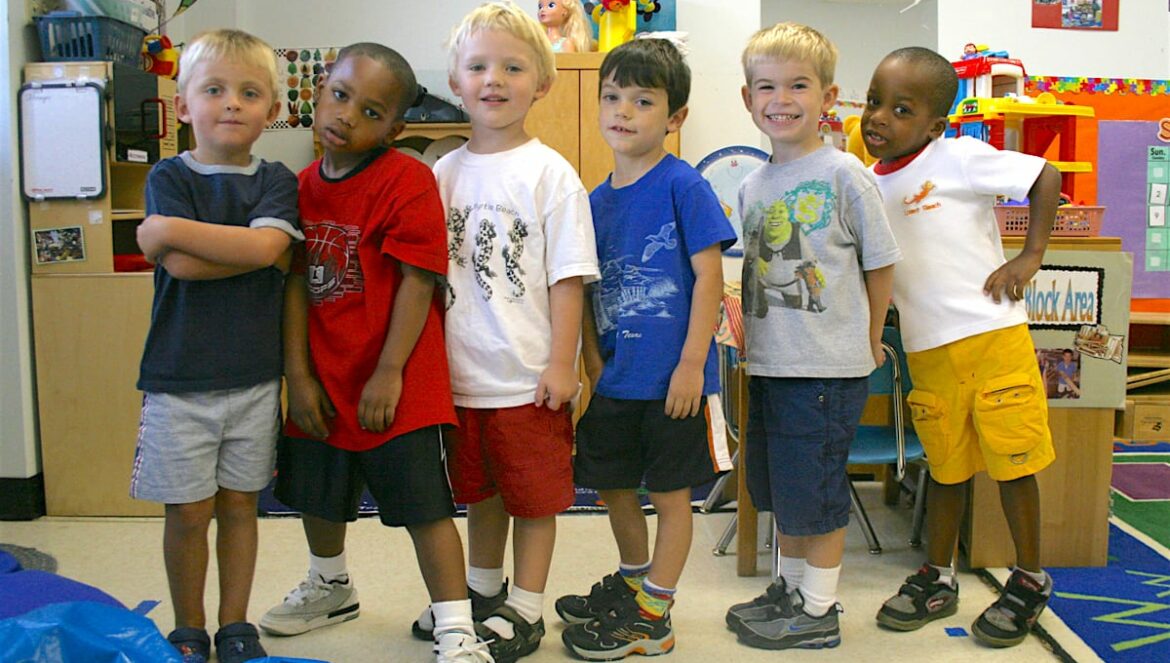Schools are demonizing the distinctive, assertive sociability of boys
by Ellen Hurst
 Parents of boys should ask themselves this question as they enter the doors of their schools. A myriad of incidents suggests that the answer is yes. By the time they reach school, many boys are already lagging behind in literacy: at age five, there is a gap of 11 percentage points between boys’ and girls’ achievement in reading.
Parents of boys should ask themselves this question as they enter the doors of their schools. A myriad of incidents suggests that the answer is yes. By the time they reach school, many boys are already lagging behind in literacy: at age five, there is a gap of 11 percentage points between boys’ and girls’ achievement in reading.
More and more boys struggle with reading and literacy as they progress through the school system. Boys are also less likely to enjoy reading and less likely to spend time reading outside class. This literacy gap is becoming more severe because boys are not only underachieving in literacy, the gap between how much boys and girls enjoy reading or choose to spend time reading is widening.
So, what is making boys more likely to struggle with reading? Not all boys struggle with reading, and while the literacy gender gap is seen internationally, there are notable exceptions including Chile and the Netherlands. Something we are doing as a society is making boys more likely to fail at reading. In school, what is taught and how it is taught and assessed all impact on boys’ achievement, while boys’ gender identities, influenced by society’s expectations and reinforced by their peers, can negatively impact their attitudes toward reading, the amount of time they spend reading and ultimately their reading skills.
Many boys do not have the stamina to read beyond the 100th page of a book. Does this mean we need toss out longer novels in favor of shorter books? For those boys who lack the ability to persevere after the first two pages, providing shorter books does not solve the problem. We must engage boys and build upon their own interests
Why are millions of boys struggling to read and why is a large and ever-increasing male horde is falling behind in grades and disengaging from school? College has never been more important to a young person’s life prospects, and today boys are far less likely than girls to pursue education beyond high school.
 Across the country, schools are demonizing the distinctive, assertive sociability of boys. The obsessive focus of zero tolerance policies is creating hostile environments for young boys. Do we really need to ban much-loved games such as Red Rover and tag? Will changing the name of “tug of war” to “tug of peace” change the act of competition the game requires? Young boys love action narratives involving heroes, bad guys, rescues and shoot-ups. As boys’ play proceeds, imaginations soar and plots become more elaborate. They naturally learn the component parts of stories and novels while developing the skills of visualization and problem solving.
Across the country, schools are demonizing the distinctive, assertive sociability of boys. The obsessive focus of zero tolerance policies is creating hostile environments for young boys. Do we really need to ban much-loved games such as Red Rover and tag? Will changing the name of “tug of war” to “tug of peace” change the act of competition the game requires? Young boys love action narratives involving heroes, bad guys, rescues and shoot-ups. As boys’ play proceeds, imaginations soar and plots become more elaborate. They naturally learn the component parts of stories and novels while developing the skills of visualization and problem solving.
How can we find balance between imaginative play and play that escalates into real aggression? When classroom practices of 98 teachers of four-year-olds were surveyed, it was found that boys’ action narrative was the play format least tolerated. Nearly half of teachers stopped or redirected boys’ dramatic play daily or several times a week.
Imaginative play is a critical basis for learning. Action narratives improve conversation and imaginative writing. In addition, unstructured play also builds moral imagination, social competence and imparts critical lessons about personal limits and self-restraint. As we focus on the literacy gap experienced by our boys, it is possible that the intolerance for boys’ action-narrative-play choices may be undermining their early language development and weakening their attachment to school. Schools must create a safe environment for all children. However, efforts to re-engineer the young-male imagination are doomed to fail. These action narratives will continue to take place in backyards and soccer fields. They will succeed spectacularly in at least one way. They will send a clear and unmistakable message to millions of schoolboys: You are not welcome in school.
What’s changed in American education for boys over the past 30 years?
 In a word: kindergarten. In my kindergarten classroom, you would have seen kids doing lots of different things: singing, dancing, playing, finger-painting, and maybe even a little formal instruction. Walk into almost any kindergarten today and you will see something quite different. The kindergarten of today looks very much like first grade looked 30 years ago.
In a word: kindergarten. In my kindergarten classroom, you would have seen kids doing lots of different things: singing, dancing, playing, finger-painting, and maybe even a little formal instruction. Walk into almost any kindergarten today and you will see something quite different. The kindergarten of today looks very much like first grade looked 30 years ago.
Those proponents of an academic kindergarten would point out that we must be in the forefront of our global economy. Ironically, some of those countries that are academically our superior start children in school later than we do. It is not difficult to explain why starting kids in school two years later produces superior performance in international standardized assessments.
By starting school two years later, and teaching kids material when it is developmentally appropriate for them to learn, they are less likely to hate school. If kids don’t hate school, it’s easier to get them to learn. If kids do hate school, as many American boys do, then the teacher is starting out with a major handicap before even stepping into the classroom.
Boys’ underachievement in reading is a complex issue. To broaden our understanding, I have adopted a five-stage model:
 Gender identities significantly impact boys’ attitudes towards reading. Their literacy behaviors and ultimately their skills are frequently affected by attitudes which see success as being linked to non-academic activities. Boys see reading as being more for girls. These identities increase the likelihood of boys having a low interest in reading as an enjoyable activity and may undermine their literacy attainment.
Gender identities significantly impact boys’ attitudes towards reading. Their literacy behaviors and ultimately their skills are frequently affected by attitudes which see success as being linked to non-academic activities. Boys see reading as being more for girls. These identities increase the likelihood of boys having a low interest in reading as an enjoyable activity and may undermine their literacy attainment.- Negative attitudes to reading related to gender identities are exacerbated by external social and educational contexts such as increasing peer pressures and the transition to secondary school. These potentially strengthen the negative impact of gender identity on literacy attainment.
- There are often specific triggers which turn boys off reading (the most frequently quoted are preference for other forms of leisure activity and not finding reading materials which interest them). These provide children with the specific reason they need to say they don’t want to read.
- There is a national effort to deconstruct what is perceived as a masculinized educational framework.
- We must acknowledge that there is dysteachia — that kids have mislearned because they have been mistaught.
Author
Dr. Ellen Burns Hurst, author of Why Can’t My Daughter Read? and Why Can’t My Son Read? She holds a Ph.D. in Language and Literacy and has spent a career focused on cutting edge reading interventions. Dr. Hurst continues to focus on her passion of changing the reading lives of children and adults through research presentations at national and international literacy conferences. She is an experienced reading/intervention specialist in public and private schools.
Currently, she engaged in her private practice in Atlanta, Georgia. Her past university teaching assignments focused on assessment in the early childhood classroom for undergraduates as well as literacy assessment and linguistic components of literacy at the graduate level.
Visit Dr. Hurst’s new global contributions at https://myedexpert.com/vendor/Ehurst/ and learn more at https://whycantmydaughterread.com/
Further Reading
- Psychology Today – Memo to Our Sons and Grandsons: The Future Is Female
- Washington Examiner – UPDATE: Kindergarten teacher denies Legos to boys in name of ‘gender equity’
- ChalkBeat – When my students got aggressive, my school agreed to help.



 Gender identities significantly impact boys’ attitudes towards reading. Their literacy behaviors and ultimately their skills are frequently affected by attitudes which see success as being linked to non-academic activities. Boys see reading as being more for girls. These identities increase the likelihood of boys having a low interest in reading as an enjoyable activity and may undermine their literacy attainment.
Gender identities significantly impact boys’ attitudes towards reading. Their literacy behaviors and ultimately their skills are frequently affected by attitudes which see success as being linked to non-academic activities. Boys see reading as being more for girls. These identities increase the likelihood of boys having a low interest in reading as an enjoyable activity and may undermine their literacy attainment.